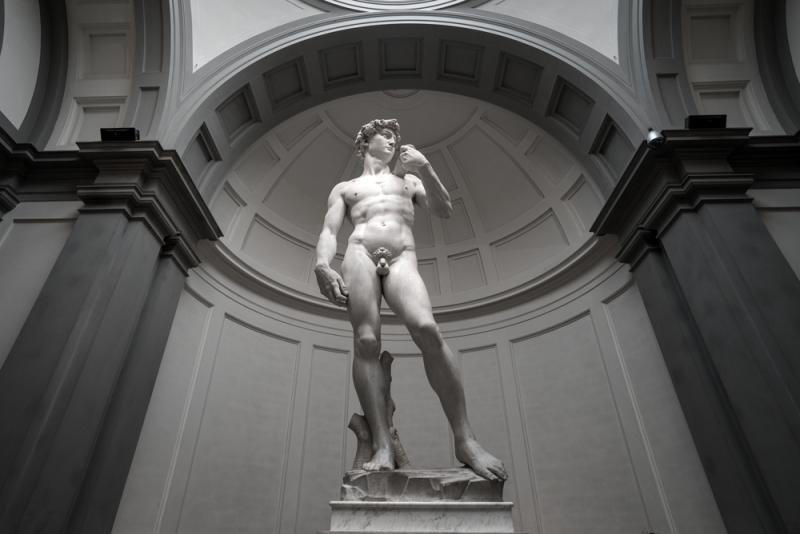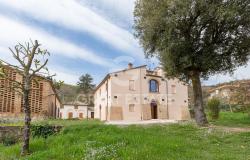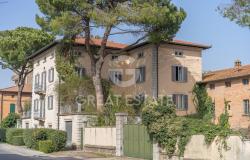Art historian, Yale-educated scholar and bestselling author Laura Morelli has said she avoids controversy like the plague. But when Tallahassee, Florida’s “David debacle” made headlines last week, she had to wade into the fire.
The catalyst? A now-viral incident originally reported by the Tallahassee Democrat: Former principal of Tallahassee Classical School Hope Carrasquilla said she was forced to resign after parents complained about a lesson she gave on the Italian Renaissance, which touched on Michelangelo’s David and Botticelli’s Birth of Venus. (According to the Democrat, Carrasquilla said two parents wished they had been informed of the lesson ahead of time, adding that another called Michelangelo’s David “pornographic.”)
It touched a nerve with Morelli — a mother of four and a frequent contributor to Italy Magazine — but she wasn’t convinced pure reprimanding would be the most effective response. Instead, she wrote a letter to the school board, offering the entire Tallahassee community an online crash course on Michelangelo’s David — for free.
Italy Magazine spoke with Dr. Morelli about the controversy and the motivations behind her generous move.
Toni DeBella: Given your expertise as an art historian, what was your gut reaction when you first heard this story break on the news?
Laura Morelli: I lost sleep over it. For several days, I didn’t know where to begin or if I would ever find the words to respond. It seemed unfathomable to need to convince an educational community — especially a school with a classical curriculum — that Michelangelo’s David or other Renaissance masterpieces might be worthy of study.
TD: Can you give us some examples of other moments in history when people may have been scandalized and shocked by similar occurrences?
LM: One reason David was so innovative was that it was the first colossal nude sculpture since antiquity. At 17 feet tall, it must have made quite an impression on its original audience!
I imagine that some people in the 16th century may have been shocked by the nudity. But I believe they also understood that David was so much more than a naked man. He was all at once an Old Testament hero in the guise of an ancient god, and a symbol of the proud and defiant Florentines. He embodied their civic virtue and collective strength as a community. The sculpture truly represented a moment in time — a turning point in the history of art.
Not long after the David was placed before the Palazzo Vecchio, garlands of copper leaves were cast for the loins and head of the sculpture. But it’s hard to say if that was a move to cover — or rather embellish — the sculpture.
Of course, over centuries, some have sought to cover — or remove — the genitals of nude sculptures across Italy. But these are in the minority. All you have to do is stroll through an Italian city to find nudes everywhere, including inside and outside of churches. Considering the vast number of these images, there is only scattered historical evidence that people have interpreted such images as “controversial."
TD: On your website and in an Instagram post to followers, you described yourself as an “extreme introvert” who normally avoids getting involved publicly in controversies. What about this subject in particular compelled you to go against the grain and defend the integrity of this work?
LM: I felt in my gut that those who objected to their students viewing the David were just uninformed about its story, about why and how the sculpture represents a tipping point in history. And I was struck by the irony of how perfectly the David’s symbolism aligns with Tallahassee Classical School’s own stated mission for its students.
Two things gave me the courage to speak out about it. One was that my students and readers kept sending me messages, asking for my thoughts. They wanted me to put it into words. So, I decided to try.
The second thing is that I have been following the deeply troubling book bans taking place in different parts of the US. I’ve been inspired by the eloquent words of author Jodi Picoult and a 100-year-old woman named Grace Linn, who reminds us of the restrictive policies of the World War II era dictating what books and art people were allowed to consume — or not. I think we all know how that ended.
It’s an extraordinarily challenging moment for our school teachers. I give them so much credit for their dedication to education when it’s so difficult to navigate these rough waters.
TD: Given that David is among the most recognized and revered works of art in the world, can you speak to the irony (and lunacy) of a Florida school board’s decision to deprive children of experiencing this magnificent, 500-year-old sculpture?
LM: I think that’s the most striking thing about the case in Florida.
You have a school with a classical curriculum whose mission states that it is “training the minds and improving the hearts of young people,” and that it “provides instruction in the principles of moral character and civic virtue.” There is no greater example of this vision in history than in Michelangelo’s David.
I sincerely hope they’ll begin to see it that way.
Read Dr. Morelli's full letter to the Tallahassee Classical School Board here. Learn more about all of her course offerings here.













